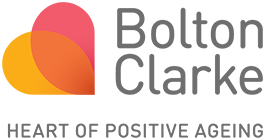Timely Enhanced Access to Medication Management (TEAMM): Pharmacist workforce model trial
Researchers: Cikie Lee, Rohan Elliott, Snezana Kusljic, Judy Lowthian, Robyn Saunders, Ginn Chin, Christine Bellamy, Georgia Major
Research partners: Austin Health, Eastern Melbourne Primary Health Network (PHN), University of Melbourne
Study population: At home support clients
Funding support: Eastern Melbourne PHN, Primary Health Networks Innovation Funding Stream (2016-2018)
This work was commissioned by the Eastern Melbourne PHN to implement and evaluate a home visiting pharmacist service within their catchment area for a period of 12 months. The project was informed by a pilot study conducted by the Research Institute - the Visiting Pharmacist (ViP) project. ViP focused on reducing medication errors and adverse drug events, addressing inaccurate medication lists and polypharmacy. The TEAMM project aimed to replicate and scale up the ViP pilot, evaluate effectiveness of the care model and explore client, carer and health professional experiences.
During the 12-month study, 131 clients received the home-based pharmacist service. The average age of participants was 82 years, with the majority female, and with an average of 12 prescribed medications. A very high proportion (76 per cent) used one or more potentially inappropriate medications at baseline, which reflects complex multi-morbidity.
Clients and their carers reported they felt confident about their medications, medication management and the support they received through this service. This was related to the education and information provided by the pharmacists, who also simplified dose regimens. Participants reported improvements in medication adherence, symptom management and unwanted side effects.
The nurses reported the pharmacist support increased their knowledge and sometimes led to time savings.
The pharmacists described improved interdisciplinary care and communication between team members comprising prescribers, community pharmacies, nurses, clients and carers. In addition to the home visiting role, the pharmacists addressed nurse requests for medication advice and information, prepared newsletters and provided nurse education sessions.

